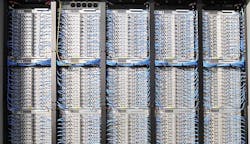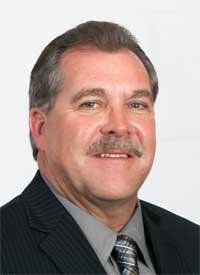Modular Strategies Helping Deploy Data Centers Faster
Today we continue our Data Center Executive Roundtable, a quarterly feature showcasing the insights of thought leaders on the state of the data center industry, and where it is headed. In today’s discussion, our panel of experienced data center executives – James Leach of RagingWire Data Centers, Robert McClary of FORTRUST, Jack Pouchet of Emerson Network Power, Ted Behrens of Chatsworth Products, and David Shepard of BASELAYER – will examine the challenge of rapid deployment of data center capacity for major cloud computing providers, and the steps the industry is taking to meet these demands..
The conversation is moderated by Rich Miller, the founder and editor of Data Center Frontier.
Data Center Frontier: Recent cloud growth has increased the focus on “speed to market” – the ability to deploy data center capacity rapidly and efficiently. How would you evaluate the industry’s progress on provisioning timelines, and where do you see opportunities to improve it?
JACK POUCHET, Emerson Network Power
Jack Pouchet: The industry has made tremendous strides in reducing the time to “go live” within a new data center, whether a greenfield new build or a brownfield retrofit. Containerized, modular, and prefabricated approaches have delivered complete data centers in the 90 to 270 day range, depending upon complexity, size, location and other variables.
At the large building level, the advent of fully integrated power and thermal management systems with UPS, switchgear, batteries, and power system controls, factory-assembled, tested, and mounted on a skid/platform are a giant leap forward in speed to deploy, test, and commission. Further factory built integrated systems, whether power or thermal management have sufficient real-world field data demonstrating improved quality, reliability, and life-cycle performance over the traditional approach using multiple trades, subcontractors, and on-site fabrication techniques.
Finally the prefabricated and modular approaches to building out medium to large-scale data centers are here to stay. They have shown their value proposition in both speed to deploy and quality of construction along with ease of operation. Numerous techniques are available in this space as one type does not fit all. Do your research, and you will find the life-cycle savings will justify the time invested.
DAVID SHEPARD, BASELAYER
David Shepard: One of the benefits of modular construction is that we provide a standardized, engineered, proven product that does not need to be redesigned for every order. As a manufacturer, we can quickly go from order to finished product, and work concurrently with site preparation so the project ties together right at the end, with the modules arriving at the site just as the pad and site infrastructure is ready. Just like buying a car, it’s much faster and more convenient to purchase a standard set of factory options than request a long list of customizations, or a completely unique car.
For smaller edge deployments, local power capacity may already be available to operate the system. For larger systems, it’s smart to provision the site for the full anticipated build. The work takes longer and is more expensive on the front end, but as the site grows, data center expansion is nearly as easy as ordering a new module and making the connections when it arrives on the site. It’s also more efficient than building a huge building, which will take 5 years to fill, when it’s possible to plan ahead but only purchase the modules that are needed today.
James Leach: The good news is that many of the current crop of data center leaders lived through the telecom boom and bust in the early 2000s where the “if you build it, they will come” model was shown to be a failure.
JAMES LEACH, RagingWire Data Centers
Over the last 15 years the data center industry has implemented phased-build strategies that allow us to deploy data centers incrementally as market demand develops. These phased-build strategies were critical to the early growth of the colocation industry.
What’s changed with the new cloud providers is the size of the data center product they want and the speed with which they want it.
Five years ago, a data center company could make inventory available in 2 MW increments. Today, large cloud providers are contracting for 5, 10, even 20 MW of data center capacity, and they want to see the completed data center in advance or have a committed availability plan.
To support a shorter cycle time and faster speed to market, phased-build models are shifting to new modular build approaches. In the old days, data center shells were built on-site and a team of specialists came to the site to assemble and install the critical infrastructure. With modular builds, the data center components – including electrical and mechanical systems and even exterior shells are built in off-site factories and shipped to the data center property for final installation. The result is what used to take 18-24 months to build can now be up and running in about 12 months.
To fund this new capacity model, shared risk “pre-leasing” contracts are becoming more common that have incentives and penalties for both the supplier and the buyer. These contracts allow the data center provider to fund their construction activity with the knowledge that a majority of the capacity will be leased when it is available. The data center buyer gains a firm commitment on when their data center capacity will be ready.
Lastly, a data center ecosystem is emerging that supports these large scale, faster builds. Architectural and engineering firms are involved earlier in the process and at a greater depth than they were in the past. Construction companies are becoming an extension of the data center provider and a full partner in the development. Service providers are delivering the installation and fit-up required for these large-scale deployments.
TED BEHRENS, Chatsworth Products
Ted Behrens: The growth of the hyper-scale market and subsequent slowing of Enterprise data center build-outs has put extraordinary pressure on the supply chain component of infrastructure deployment. With Enterprise scale build out projects are spread over a broad spectrum of customers and timelines as opposed to the concentration driven by the hyper-scale customer. This will support innovation in developing a robust, regional, yet flexible delivery model as a key differentiator amongst suppliers.
The challenge will be to find that appropriate balance point between price, availability and ability to customize infrastructure in order to serve the rapid evolution of the business needs.
ROBERT McCLARY, FORTRUST
Rob McClary: This is an important question. First of all, it’s not just cloud growth that’s increased the focus on speed to market. It’s cloud growth, it’s the growth in healthcare, it’s the growth in big data analytics; all those influencers are moving us to more efficient approaches to delivering data center capacity quicker and in a more incremental approach.
Modular data center construction approaches, methods, and components have greatly improved how we look at building and delivering data center capacity in a more capital efficient and “just in time” model. As an industry, I don’t think data centers are anywhere near being proficient at this new model yet. We talk a lot about cooling efficiency in a data center, but we don’t talk about capital and delivery efficiency in a data center nearly enough. We’ve got to get better at that.
Sadly, part of the holdup is that some contractors, engineers and vendors make less money when data center design and construction evolves or becomes more capital efficient. Consequently, when new more capital efficient approaches start to happen, they tend to happen slowly. I think a modular approach to delivering data center capacity is one of the ways to become more capital efficient and more delivery time efficient. However, it’s only one of a few ways to get there.
NEXT: Our panel discusses the impact of edge computing and the Internet of Things, and how these trends are influencing how and where data centers are built and deployed.
Keep pace with the fact-moving world of data centers and cloud computing by following us on Twitter and Facebook, connecting with me on LinkedIn, and signing up for our weekly newspaper using the form below:
About the Author







